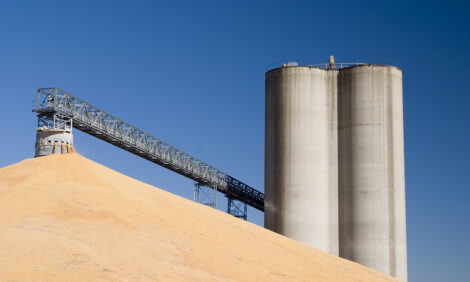



Helping Pigs to Digest Phosphorus
US - Phosphorus is a vital nutrient for pig growth, but pigs do not always digest it well. Research conducted at the University of Illinois has determined how adding various levels of the enzyme phytase to the diet improves how pigs digest the phosphorus in four different feed ingredients. Improving phosphorus digestibility has positive implications for producers' bottom lines as well as for the environment."The majority of the phosphorus in plant feed ingredients is bound in phytate," said U of I animal sciences professor Hans Stein. “It is difficult for pigs to utilize that phosphorus because they cannot hydrolyze that phytate molecule. There is an exogenous enzyme called phytase that helps the pigs hydrolyze that phosphorus bond from phytate so the digestibility is increased.“
However, there are no data on the response to different levels of phytase in the diet. “It's not known if we need to add 500, or 1,000, or 1,500 units of phytase to get a maximum response, and it's also not known if the response is the same when we use different feed ingredients,“ Professor Stein said.
Professor Stein's team tested the digestibility of phosphorus in conventional corn grain, corn germ, distillers dried grains with solubles (DDGS), and high-protein distillers dried grains (DDG). They tested each ingredient with no phytate and with 500 units, 1,000 units, and 1,500 units of added phytate.
Supplementation with 500, 1,000, and 1,500 units of phytate increased phosphorus digestibility from 40.9 per cent in corn grain with no added phytate to 67.5, 64.5, and 74.9 per cent, respectively. Phosphorus digestibility in corn germ increased from 40.7 per cent to 59.0, 64.4, and 63.2 per cent, respectively. Digestibility of phosphorus in DDGS increased from 76.9 per cent to 82.9, 82.5, and 83.0 per cent, respectively, but the increase was not significant. Phosphorus digestibility in high protein DDG increased from 77.1 per cent to 88.0, 84.1, and 86.9 per cent, respectively.
"What we discovered was that for corn and corn germ, we had a low digestibility without phytase, but as we added phytase to the diet, we increased the digestibility quite dramatically," Professor Stein said.
For DDGS and high-protein DDG, the result was quite different. Because these two ingredients have been fermented, some of those phytate bonds are hydrolyzed in the ethanol plant and therefore, less of the phosphorus is bound to phytate in DDGS and high-protein DDG.
“When we added phytase to DDGS, we did not see a significant increase in digestibility because the digestibility was already very high. And the same was true for HP DDG,“ said Professor Stein. “What this tells us is that the effect of phytase depends on the particular ingredient. If it's an ingredient that has a lot of phosphorus bound to phytate, we see a nice response, but if it doesn't have much phosphorus bound to phytate, we don't see nearly as much of a response.“
The second finding was that the response to phytase is not linear. “The response to the initial 500 units of phytase is much greater than if we add another 500 units or another 500 units after that,“ said Professor Stein. “It's a curvilinear response, even for the ingredients where a good response is obtained.“
The researchers developed equations to predict the response to every level of phytase supplementation up to 1,500 units.
This research will help producers and feed companies to increase the digestibility of phosphorus in ingredients they are already feeding, thus avoiding the expense of adding dicalcium phosphate or monocalcium phosphate to swine diets.
"With current prices, it's less expensive to use phytase than it is to use dicalcium phosphate or monocalcium phosphate," Professor Stein pointed out. Use of phytase to improve phosphorus digestibility also reduces the amount of phosphorus excreted in feces, which in turn reduces the environmental impact of swine production.
Professor Stein's lab is continuing its research into phytase supplementation and is currently testing different sources of canola meal and soybean meal. He and his team plan to conduct similar research for all major feed ingredients used in US swine diets.
The study was published in a recent issue of the Journal of Animal Science and was co-authored with doctoral candidate Ferdinando Almeida.








